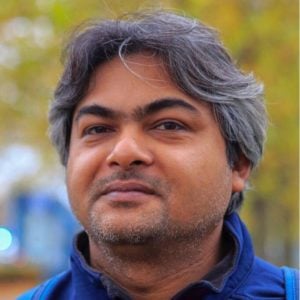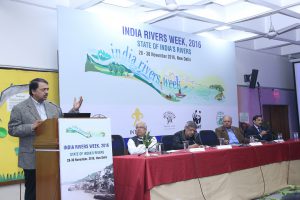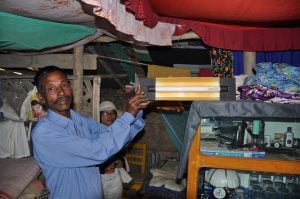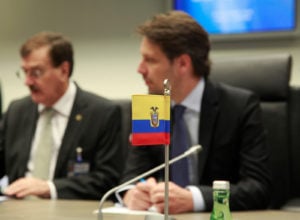Barisal city lies 118 kilometres south of Dhaka, the capital city of Bangladesh, and 106 kilometres north of the Bay of Bengal. Just 2.5 metre above sea level, the city of 500,000 is spread over an area of 58 square kilometres – spread so widely and so low to the ground, Barisal, one of the oldest cities in the country, was also known as the city of canals. A popular saying went, “dhaan-nodi-khaal, ei tin e Barisal”(paddy, rivers, and canals, these three things are Barisal).
This was in the past. Unplanned development, huge population pressures and a lack of proper solid waste management has cost the city its water-based system of transport and communication.
The city is fighting back, though. A new master plan brought out by the plans on reviving the rivers and canals to be used again like the old days, and to make the city more liveable. Begun last year the fifteen year project is budgeted at EUR 70 million (USD 74.3 million), of which the KFW Development Bank has given a grant of EUR 30 million (USD 31.8 million), the rest coming from government funds.
Abu Siddique, a Dhaka based journalist, spoke with the Barisal city mayor, Ahsan Habib Kamal, on the project.
![Ahsan Habib Kamal, the mayor of Barisal [image by Abu Siddique]](/wp-content/uploads/2016/11/Mayor_picture.jpg)
Ahsan Habib Kamal (AHK): Barisal city is crisscrossed by numerous canals, rivers and wetlands (ponds). It is very important to preserve nature to continue the growth of the economy. But most of these have been occupied by either influential people, or are being squatted on by the poor who do not have any place to live. Our plan is to rescue the land from the influential, and to resettle the poor.
This will allow us to reintroduce the use of water bodies for transport, reducing the pressure on roads. At the same time, the water-bodies will be used as natural drainage systems to reduce waterlogging during the monsoons. Furthermore, the Master Plan envisages the canals as sources of water, storm water drainage channels, areas for fish cultivation, irrigation channels, and a means to manage the microclimate.
The development of the Sagardi canal is a demonstration project. It includes the removal of all sewer drains from the canal, the construction of a pedestrian walkway and bicycle path along the canal, and the redesign and reconstruction of bridges and culverts over Sagardi canal, so that boats and trawlers can easily move through it.
AS: Can you please describe the design of the planned waterways?
AHK: We will mainly be using the 46 existing canals inside the city, which are very old and have worked as the natural drainage system of the city. We will also create a few new canals to improve the connectivity.
According to the design, there will be seven major modal transfer stations in seven different portions of the waterways, and which will be well connected with the roads. Therefore we will also build some new roads.
AS: The master plan was approved in 2015, what has happened since then?
AHK: We have removed illegal infrastructures from a two kilometre stretch along the Kirtonkhola river so far, but there is a lot to do. We hope to remove all the illegally occupied areas within two years, to make the canals navigable.
AS: It is said that your officers are facing a lot of pressure to bypass the master plan and give permission for high rise buildings on the Sadar Road and in other parts of the main city. What measures are you taking to resist them?
AHK: Many influential people are being affected, so this plan definitely is against their interest. But we cannot change the plan just for them, because it is in the interest of the whole city. We have tried to engage the district administration as well as the young generation of the city to inform them about the benefits, thus creating the social awareness needed to sustain the project. The city dwellers have been made aware so that they do not fill any ponds in the city with garbage.
Our greatest asset is that people see that this works. Each year during the monsoon, the lower part of the city is flooded, but last year, since the drains were clear, the rainwater went down very quickly because we excavated several canals and ponds under this initiative. These steps will prevent water-logging problem in the future too, I believe. People see this, and this helps.
AS: Are you getting any support in implementing the Master Plan?
AHK: Inspired by the idea the deputy commissioner of Barisal district created a Facebook group “Barisal – Problem and Prospect” to facilitate citizens’ participation in the development process. The city dwellers, especially the younger generation, is regularly posting their feedback.
Not only this, a large group of students studying at Brojomohan College, one of the oldest colleges in the country, has recently run a demonstration campaign to clean up some canals with the participation of the local people. All of these show that people are quite interested in these issues.
![<p>Downtown Barisal [image by Joe Coyle]</p>](https://dialogue.earth/content/uploads/2016/11/Downtown-Barisal-Joe-Coyle.jpg)








